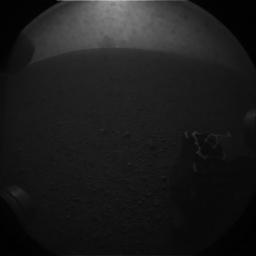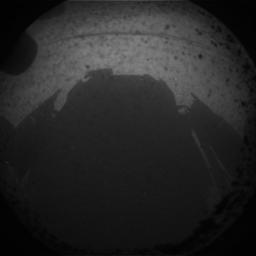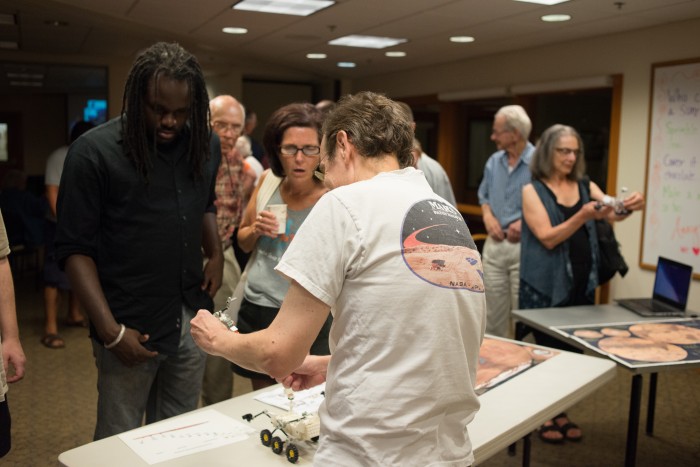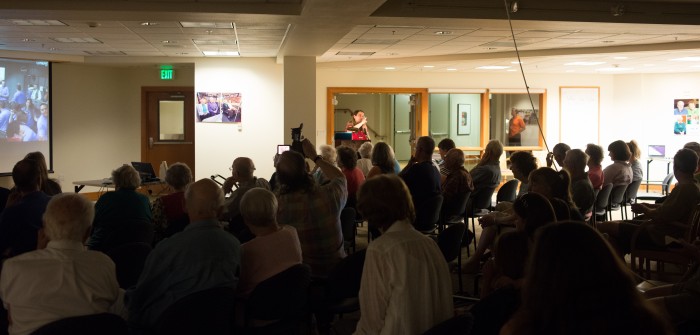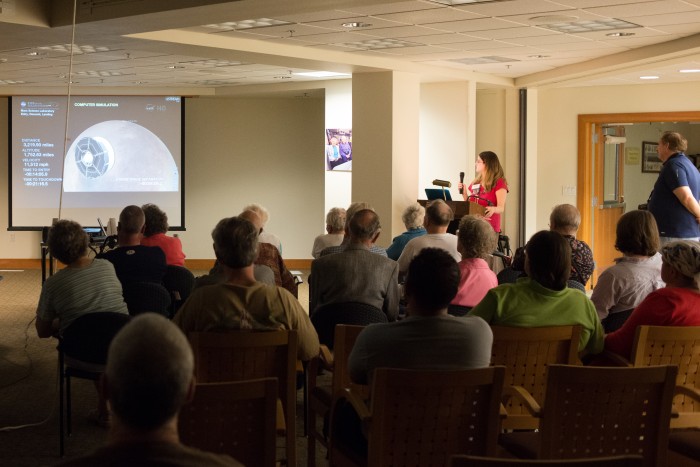Archive for the ‘You Need To Know – but Everyone Else’s Already Posted It’ Category
 Too Many Meteors? Nah.
Too Many Meteors? Nah.
Sure seems like we’ve had more than our fair share of bollides this weekend (Russia, Cuba, and San Francisco to name a few). Guess what? I THOUGHT SO TOO. But I was also skeptical. So I asked the scientists I trust* and scientists who specialize in this. They said that we ARE NOT experiencing an apocalypse or really even an increase.
1. Please go read my blogfather, Phil Plait’s, article about this.
The rest of my article is mostly in addition to what he’s already said.
The Frequency Illusion
In popular parlance this is also called the Baader-Meinhof Phenomenon, but the sources on that name are a bit questionable, so I’ll call it the Frequency Illusion.
You know how when you learn a new word, like “brobdingnagian,” suddenly you begin to see that word everywhere? (Perhaps brobdingnagian is a poor choice, it’s just the newest word I’ve learned.) How about The Great Gatsby? I haven’t thought about The Great Gatsby in years and suddenly there’s a new DiCaprio movie coming out and it was jut mentioned in the novel I’m reading. For my husband this week it’s the word “Trypophobia.”
Anyway, that’s the Frequency Illusion. Your mind is keyed into something, and you notice it everywhere. We’ve been hyperaware of asteroids and meteors this weekend, so more people are noticing and reporting the ones that normally occur. The media too is taking special note which is helping us notice these seemingly-extra occurrences.
Coincidence?!
Yes.
The asteroid 2012 DA14 and the spectacular and devastating bollide over Russia are a coincidence. Literally a cosmic coincidence. They are unrelated.
The bollides since then have been a normal part of our everyday lives here on Earth, you just haven’t been noticing them regularly.
Bollides are Normal?
“Alice, I don’t believe you. Are you saying the bollide over Russia was normal? I don’t think hundreds of people are normally injured in sonic booms from meteors in our atmosphere.”
You’re right about that. Fireballs/Bollides/Meteors as large and powerful as the one over Chelyabinsk tend to happen once every 100-ish years. That doesn’t mean there won’t be one tomorrow, or in 50 years. On average they happen once every 100 years.
Fireballs tend to happen for objects about the size of a basketball, and those hit the Earth about once a day. Again, you can easily have two or ten in one day, as well as several days without one, but on average they happen once a day. This is what the meteors over Cuba and San Francisco were: normal daily bollides.
P.S.
Fund the search for near earth objects.
Vocabulary
I see how you might be confused. I’ve used several words interchangeably, and those that I haven’t are minutely different than each other.
- Comet — an ice and rock body in space.
- Asteroid — a smallish rocky body in space. Smaller than a planet or a Moon, larger than a house usually.
- Meteoroid — a tiny rocky object in space, usually sand-sized but up to the size of a house.
- Meteor — when a meteoroid impacts the Earth’s atmosphere it incinerates. We see them and know them as shooting stars.
- Meteorite — when a piece of a meteor survives the Earth’s atmosphere and impacts the Earth’s surface.
- Bollide — an especially bright or exploding meteor. (This is the astronomy definition, the geology definition is different, but doesn’t apply here)
- Fireball — an especially bright or exploding meteor. (Mm-hmm, pretty much the same as a bollide.)
Want More?
I got my statistics from Yeoman’s Top Ten on NASA JPL’s Asteroid Watch.
Of course, Phil’s “The Sky is Falling… or is it?” article is also great.
Vocabulary reference from NASA’s Near Earth Object program.
![]()
~ A l i c e !
*”Hey Alice, Phil just posted something a day or two ago that he later admitted was wrong. Why do you trust him?” That’s why. Scientists admit when they’re wrong and change their views as the evidence changes. This is harder to do than you might think, so keep practicing. I keep practicing too.
 Russian Meteor [Update]
Russian Meteor [Update]
Okay. I trust Phil. He says this isn’t part of the passing asteroid 2012 DA14, and this is why I trust him:
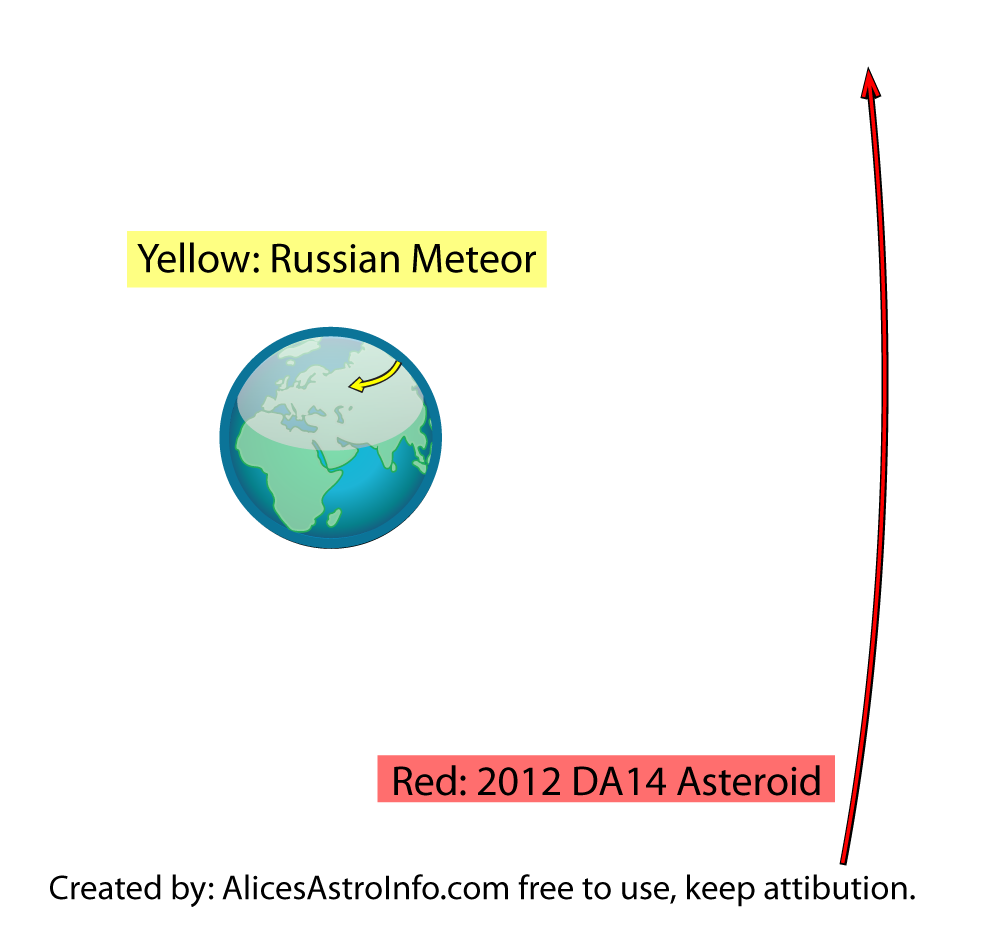
The distance between Earth and 2012 DA14 is approximately correct. The length of the meteor trail is NOT. *
I have tried to be as clear as I can when I created this diagram. The Russian Meteor and asteroid 2012 DA14 have COMPLETELY different paths. The directions are more-or-less correct in this diagram. The length of the meteor trail is too long, but the distance between the Earth and the asteroid is about correct.
This is why I strongly, STRONGLY think the two are unrelated. They’re just plain going different directions.
Okay. Basics:
- Last night (3:25am UTC 2/15/2013 or 7:25pm 2/14 Seattle) an awesome meteor streaked through the skies in Russia. People (numbers vary between 100-400) were injured because the sonic boom of the meteor broke glass and possibly some buildings.
So far (as of 1:34am Seattle time) there has been NO report of a meteor IMPACT. (So it’s a meteor not meteorite until confirmation).There are now likely true reports of impact. - The sonic boom set off car alarms as well.
- There is a spectacular trail in the sky behind the meteor. I, Alice, suspect this is mostly water vapor, just like clouds… but I haven’t done the chemistry on that yet. (Here’s tenuous corroboration.)
- The trail splits partway through suggesting the meteor did too. Not unusual: just cool.
- The earliest estimate, according to @Astro_Sailor on Twitter (a friend of an acquaintance) says in-back-of-the-envelope numbers that maybe this is within the realm of 300kg. I’m positive that number will change.
- New information: “The estimated size of the object, prior to entering Earth’s atmosphere, has been revised upward from 49 feet (15 meters) to 55 feet (17 meters), and its estimated mass has increased from 7,000 to 10,000 tons. Also, the estimate for energy released during the event has increased by 30 kilotons to nearly 500 kilotons of energy released. These new estimates were generated using new data that had been collected by five additional infrasound stations located around the world – the first recording of the event being in Alaska, over 6,500 kilometers away from Chelyabinsk. The infrasound data indicates that the event, from atmospheric entry to the meteor’s airborne disintegration took 32.5 seconds. The calculations using the infrasound data were performed by Peter Brown at the University of Western Ontario, Canada.” — Nasa.gov
- Not related to the asteroid. See diagram above/attached: mine is the best available.
- This is also not related to the comets this year.
- Yes, Russia got the world’s last cool meteor: the Tunguska Event in 1908.
Go read:
1) Phil Plait
3) Alan Boyle
We all make mistakes, but I trust them and they can help you weed out the real reports from the hoax reports. There are NO flaming craters, but it is an exciting event. Hoping everyone heals up from the falling glass okay.
* Thanks to @AstroGuyz I corrected a misspelling in the original diagram. That’s what I get for blogging at 2am!
![]()
~ A l i c e !
 Russian Meteor
Russian Meteor
Go read Phil’s post, because the best that I could do is quote him.
As far as I can tell it is UNRELATED to asteroid 2012 DA14 and the close approach tomorrow.
BE SKEPTICAL of anything you read. Phil says there are already hoaxes about this. I’ll write a second post as soon as I can pull together some real information for you.
![]()
~ A l i c e !
 Comet PanSTARRS
Comet PanSTARRS
It’s been a while since we had a good comet. Long enough that children in North America probably haven’t seen one, and you might have forgotten just how amazing they can be.
Comets Are Awesome
I know you don’t believe me, but comets can be spectacular objects to view without any magnification at all. No binoculars, no telescope, no squinting. This one might take a little magnification though, we’ll see. Comets are also unpredictable.
In 1996 Comet Huyakutake‘s tail spanned 100 degrees across the sky. Hold your arms at right angles to each other, then lift them up over your head, still at right angles. That’s 90 degrees. Look from one hand to the other- the tail was longer than the distance between your two hands (approximately). Now, Comet PanSTARRS (C/2011 L4) will probably not be like Huyakutake. All the evidence recently points to it being a bit of a dud, but it could still surprise us.
Comet Hale-Bopp (in 1997), which you likely remember had two tails, and under the best conditions that tail was about 10 degrees long. Hold your fist at arm’s length, and from knuckle to knuckle is about 10 degrees. The Moon is half a degree.
As of February 9th, PanSTARRS had a 2 degree gas and ion tail, visible in long-exposure photography from the Southern Hemisphere.
Can I See PanSTARRS?
This is what you all want to know, right? According to Sky and Telescope it is on track to being visible here in the northern hemisphere.
- When? March 12-24, 2013 is your best bet from the Northern Hemisphere (West Seattlites, this is you!). Look just after sunset. Lucky for us, West Seattle has a GREAT western horizon for stargazing. I’ll meet you at Lincoln Park, okay?
- Where? In the west, low on the horizon. Since it is just after sunset you won’t see many stars, but it is in the constellation Pisces in early March, and Andromeda in later March. Astronomy has a good finder chart.
- How? As of now, you’ll need binoculars. If it brightens up considerably you might not, but plan on bringing binoculars.
- What? Comet PanSTARRS currently has a 2 degree tail (two pinkie-finger widths), and should max out at a little brighter than the dimmer stars visible from the city of Seattle. With good viewing, the tail will be longer than the full Moon. If you can see the tail, observe how it is directed away from where the Sun just set.
- Is it close? We’re all about the close approaches right now. Comet PanSTARRS “will pass about 100 million miles from Earth as it briefly dips inside the orbit of Mercury.” according to NASA. That’s about the same as the distance from the Earth to the Sun. Not so close.
What Will It Look Like?
I found this image, and I like the context. This is more that you would see with your eyes. This is PanSTARRS on February 11 by Luis Argerich in Argentina (and a satellite on the right).
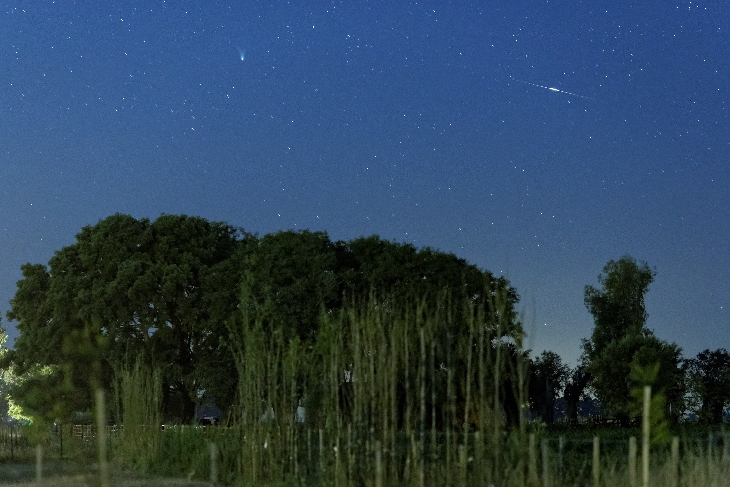
Comet PanSTARRS is the double-tailed smear on the left. The dotted line on the right is an Iridium satellite in this 10-second exposure.
Want More?
Sky and Telescope–great updated viewing information.
![]()
~ A l i c e !
 2012 DA14: Alice on KOMO Radio
2012 DA14: Alice on KOMO Radio
Quick link for you, KOMO’s Tom Hutyler and Jane Shannon interviewed me about the asteroid 2012 DA14 (close pass by the Earth on February 15 — no danger).
Hear it here: http://www.komonews.com/radio/home/featured/190111451.html
![]()
~ A l i c e !
 Incoming: Asteroid 2012 DA14
Incoming: Asteroid 2012 DA14
An asteroid is going to miss the Earth by a somewhat narrow margin on February 15, 2013 at 11:25am Pacific Time.
What’s Special About This Asteroid Approach?
Closest “Ever”
Just like we keep finding water on Mars, internet commenters wax hyperbolic about the latest meme (“This is the best YouTube video EVAR!”), and we break a local weather record every three months, you can spin anything to be the most ever, the biggest ever, or the closest ever, as long as you add enough qualifiers.
In this case, this is the biggest object1 to get this close to the earth2, since we started doing regular sky surveys in the 1990s3 looking for objects like this. As much as I’ve just knocked down how exciting that is, this is pretty cool. It is going to be close enough to be almost visible.
- Smaller objects have been closer. Meteors streak through our atmosphere every day.
- This asteroid is coming in closer than our farthest satellites. In fact, it is closer than a big set of our satellites: the geostationary satellites. Other asteroids you’ve heard of approaching us have been just barely within the orbit of the Moon. Time for a picture or two:
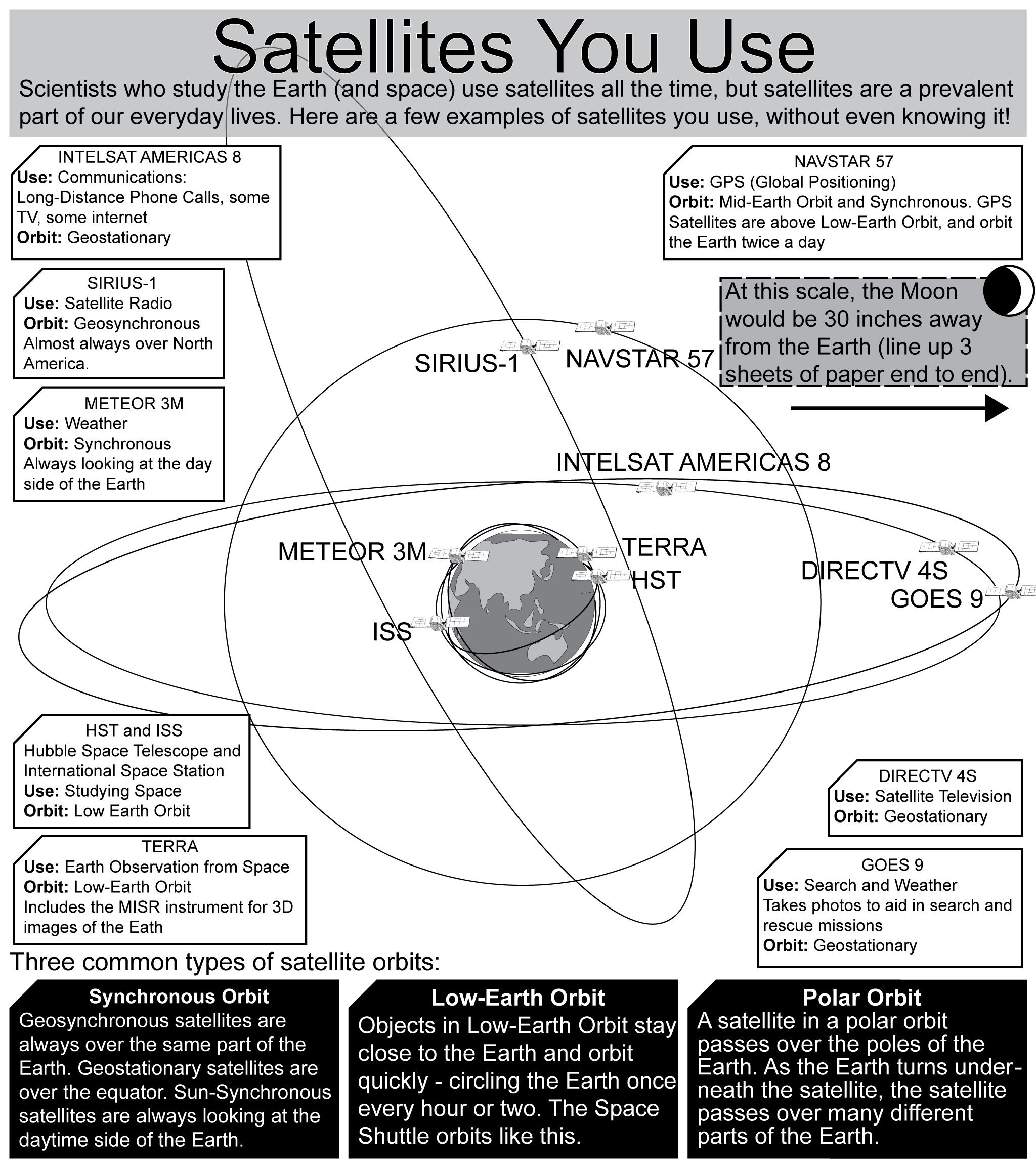
This is a small selection of satellites you use. There are hundreds of satellites in orbit around the Earth, though most of them fall into one of these illustrated orbits. I created the image above, the satellite drawings are not to scale, but the orbits, Earth, and Moon are. Jonas Goodwin drew the satellites for me. Click to make it big enough to read.
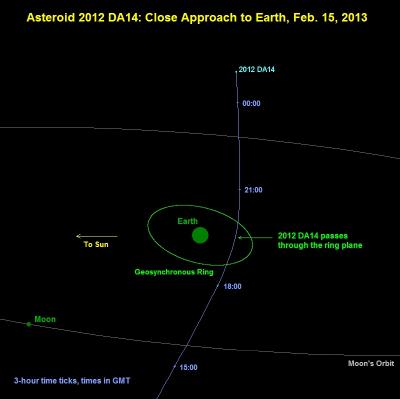
- In the picture just above, the smaller green ring is the same as the larger grey ring (with the DirecTV and GOES satellite) in the “Satellites You Use” diagram above. This asteroid-orbit diagram is from NASA. Click to link over to their website and description.
3. Lucky for you and me, there are people out there looking for asteroids that are going to get close to the Earth. NASA’s Near Earth Object (NEO) program has got your back! Of course, they need more telescope time and more funding to do a complete survey, but they sure are finding a lot of these babies. I, for one, am happy they’re doing their jobs.
Reasonably-sized
2012 DA14 (also known as “this asteroid”) is about 50 meters wide. That’s half an (American) football field, or ten yards longer than the retired Space Shuttle.
According to NASA estimates, this size of asteroid gets close to the Earth about every 40 years, but only impacts the Earth once every 1200 years.
Seeing it
If you want to see this asteroid, your best bet will be to check out NASA’s Goldstone Radar results after February 20th, or search the internet for images obtained by some of the most talented amateur astronomers such as Thierry LeGault, who specializes in taking pictures of fast-moving dim objects.
Unfortunately, here in Seattle it won’t be above the horizon until daytime, so we’re out of luck.
Might 2012 DA14 Hit The Earth?
No.
“2012 DA14 will definitely not hit Earth,” emphasizes Don Yeomans of NASA’s Near Earth Object Program at JPL in the NASA press release of January 28, 2013. “The orbit of the asteroid is known well enough to rule out an impact.”
So, no.
Similar Events
This is the same size meteor that impacted the Earth creating Meteor Crater in Arizona (50,000 years ago), and the same size as the object that exploded just above the Earth’s surface during the Tunguska Event in Siberia in 1908. From these two events we know that a meteorite of this size is destructive, but not catastrophic to the whole world. Their disastrous effect was limited to a few hundred square miles. With notice, we can plan for evacuation of an area that large.
Want More?
NASA Press Release (well written)
Near Earth Object Program Homepage
My old post: Satellites You Use (to give you a sense of scale of where this asteroid is, where our satellites are, and where the Moon is, in relation to the Earth)
Tunguska Event (This is awe-striking, read about it)
![]()
~ A l i c e !
 Green Meteor Over Seattle
Green Meteor Over Seattle
There was a bright green meteor streaking through the western sky over Seattle a couple hours ago (midnight-thirty-ish local time). Check out West Seattle Blog’s continuing coverage to hear some first-hand accounts.
This was a bolide meteor (an exploding meteor/shooting star). It was part of the Quadrantid Meteor Shower. Read my article about why we see meteors below if you’re interested in some of the science behind that.
Also, why colors? The same reason different fuels burn with different colored flames: it depends on the chemicals in the fuel. Green is commonly produced by copper when conducting flame/fireworks color experiments here on Earth–doesn’t mean the fireball had any copper in it, that’s just a related piece of information. It is also true that our eyes are very bad at determining colors at night–so the green could just be an optical illusion and not related to the composition of the meteor.
![]()
~ A l i c e !
 My Favorite Maya Mythology and Astronomy
My Favorite Maya Mythology and Astronomy
You’ve already been hearing about how the ancient Maya didn’t predict the end of the world today, that’s just misinformation, so I thought I’d share some of my favorite accurate topics about the ancient Maya astronomy and mythology.
Dark Constellations
In western astronomy and western mythology we recognize constellations as dot-to-dot pictures made of stars. In other words, we make images out of “positive space” to use some art terminology. The ancient Maya are a completely different culture: several of their constellations are made of “negative space.” They recognize images in the dark spaces between the stars. Here is an enhanced image, you can easily see the llama across the middle (with a star for an eye), and the snake in the upper right-hand corner:
I always love to use this as an example of how “different cultures are different.” Just because we think dot-to-dot pictures are the “normal” way to do constellations doesn’t mean every other culture everywhere also thinks that.
Venus
The ancient Maya place extreme significance on the planet Venus. Their calculations of exactly when it will rise, set, first appear after sunset, last appear before sunrise rival even today’s computers. And they didn’t have computers. We should spend more time observing natural phenomena ourselves.
Calendar
Their calendar is AMAZING. It has cycles within cycles. There are several good java converters out there that show you how it works.
Also, when you see a picture of the “Maya Calendar” it should be laid out in a rectangle. If it is in a circle and looks like a compass rose it is most likely the Aztec Calendar. (If it looks like gears cycling within each other, it might be the Maya Calendar after all).
Sources
Aveni, Anthony. Skywatchers of Ancient Mexico (book)
![]()
~ A l i c e !
 Curiosity Lands on Mars!
Curiosity Lands on Mars!
There’s not much I can add to what’s already been said, so I’ll settle for answering a few questions brought up at tonight’s landing watch party and sharing some photos from our party as well as the first shots from Curiosity.
Your Questions, Answered
Is that really nylon rope?
Yes.
I was inspired by Emily Lakdawalla’s post about the “cables” used during the Sky Crane Maneuver to bring a sample to tonight’s party. She managed to get her hands on a piece of the cord that had been used during testing. The look and feel were identical to nylon rope, so I stopped by Home Depot to get 7.5 meters of nylon rope. I brought her photo along and bought the closest thing they had. It was pretty darn close: similar diameter, same color, braided (different braid pattern), nylon rope. You can see mine hanging from the ceiling in some of the party pictures below. This is a close-up of the real rope:

Emily Lakdawalla and Curiosity’s cable
Curiosity was lowered 7.5 meters on three of these cords. But is the cord really nylon like the rope I got at Home Depot? Yes. All the NASA websites say “nylon cable” or “nylon cord.” I can’t tell if they did anything special beyond the style of braiding, but the main material was definitely nylon.
One other difference: my rope was rated to support 194 pounds. NASA’s cords each needed to support at least a third of the rover’s total weight (1 ton), so a single rope needed to support 333 pounds. (Whoops. I’m living in a wishful world of metric.) 1 ton is 2000 lbs, not 1000. So a single rope would need to support 660ish pounds. Then I realized I don’t know if that 1 ton weight is on Mars or on Earth. Which matters quite a bit.
Curiosity weighs 2000 lbs on Earth, 750 lbs on Mars. So each cord will hold about 250 lbs. Still needs to be stronger than my rope.
How does the plutonium power the rover?
This rover is powered not by solar panels but by a “Radioisotope Power System.” Basically, nuclear power.
This doesn’t mean there’s a nuclear generator onboard. Rather there’s a small block of plutonium (specifically plutonium-238), which is slowly decaying into uranium-234 and eventually into lead. (Wait, don’t turn away just yet, I’ll explain!) As the plutonium decays it releases a good amount of heat because of that famous equation E=mc2. (I’m not going to give the lecture on radiation, nuclear power, and E=mc2 today, rather I’m going to skip straight to the heat part.)
How does the heat power the rover? There are these awesome devices called thermocouples which, when heated, create electricity. It’s the same effect that makes a plug-in cooler work, but for the cooler you’re doing the process backwards. You add electricity, and it makes the thermocouple cold on one side and hot on the other. Onboard Curiosity, the plutonium is warming up one side of the thermocouple, which makes electricity flow through the circuit.
That electricity is captured in batteries, and Curiosity runs off the batteries.
Curiosity’s First Photos
The first photos returned were simple low-resolution images from the hazard-avoidance cameras near the wheels of the rover. By low-resolution I mean LOW–way less than a megapixel, a mere 64 pixels by 64 pixels. And the sheer number of people trying to download that image brought NASA’s servers to their knees. (The livestream of the landing didn’t bring the servers down, just that first image …)
First photo-can you tell there’s a wheel there?
(You put your right wheel in, you put your right wheel out, you put your right wheel in and you shake it all about …)
Here are the “high resolution” photos we got a few minutes later (256px square)
Our Party
The Enevoldsen Interpretation Team
My dad, Keith, did way more for this event than I did. Recall all those Lego rover Rocker-Bogie mechanisms he made? Well, he kept going. Thanks, Dad!
Also, my brother, Nils, and husband, Jason, were on hand answering all kinds of Mars and Curiosity questions, and shouting out facts I was forgetting to share. Thanks to you too.
More of the party
See my nylon cord hanging in the back of this picture?
Want More?
Links for more from Curiosity
Here’s where the newest photos will be posted, albeit without explanations.
How Do We Talk to Mars? I was reminded today of an old post of mine about communication with Mars. I was reminded by the BAJILLION hits on it, I’d completely forgotten. It’s still accurate, so check it out.
News coverage of our party!
West Seattle Blog–Tracy came to join us shortly after an evening of fielding UFO calls based on a number of sky lanterns released in south West Seattle. Always a great supporter of all my events, thanks so much!
West Seattle Herald joined us and got some great shots! Again, thanks for the coverage of this awesome and inspiring moment in engineering history.
Seattle Astronomy‘s Greg Scheiderer was also there, and got some great coverage.
![]()
~ A l i c e !
 Annular Solar Eclipse – Sunday May 20, 2012
Annular Solar Eclipse – Sunday May 20, 2012
There is a partial annular solar eclipse this Sunday. It’s visible from Seattle. A solar eclipse is when the Moon moves between the Earth and the Sun. A total eclipse is when, from this position, the Moon completely blocks our view of the Sun. An annular eclipse is when the Moon is just a little farther away, and so although it is completely in front of the Sun, it doesn’t completely block our view, we can still see a ring of Sun around the edge of the Moon. For this eclipse the most anyone will be able to see is an annular eclipse.
|
Images from Stellarium |
Viewing Safety
Never look directly at the Sun. Safe viewing is paramount. Always use appropriate safety equipment to view the Sun. This can be:
- Eclipse glasses (available at the Pacific Science Center Store and www.rainbowsymphony.com)
- #14 Welders goggles
- A pinhole projector (make: http://www.exploratorium.edu/eclipse/how.html)
Do not use stacked sunglasses, smoked glass, or rely on cloudcover to protect you.
Frequently Asked Questions
| Visibility from Seattle
Start: 5:01pm Max (82%): 6:17pm Finish: 7:25pm Sunset: 8:47pm |
Visibility from Redding, CA
Start: 5:10pm Max (96%): 6:28pm End: 7:35pm Sunset: 8:29pm |
When was the last/next one visible from Seattle?
(next one 2-5 yrs) 1994 – 51% 2014 – 64% 2000 – 30% 2017 – 93% 2000 – 36% 2023 – 85% 2001 – 37% 2084 – 93% 2002 – 48% full annular! (last one 10 yrs ago) |
Some Diagrams
Links
Where can I watch it from Seattle?
Pacific Science Center Courtyard – http://www.pacificsciencecenter.org/Education/Programs/join-us-for-two-major-celestial-events
Solstice Park in West Seattle (bring your own viewing equipment) – http://www.alicesastroinfo.com/2012/05/partial-solar-eclipse-viewing-2012-solstice-park/ –
What time should I look from another city? http://eclipse.gsfc.nasa.gov/SEgoogle/SEgoogle2001/SE2012May20Agoogle.html (“Magnitude” is the percent coverage: 0.82 means 82% coverage)
When is sunset for another city?
http://aa.usno.navy.mil/cgi-bin/aa_pap.pl
Oh no! It’s cloudy!
- Live broadcast from Japan at 2pm Seattle time: http://www.panasonic.net/eclipselive/
- Check nasa.gov for more live broadcast links
Give me more data!
http://eclipse.gsfc.nasa.gov/eclipse.html
http://eclipse.gsfc.nasa.gov/JSEX/JSEX-index.html
http://eclipse.gsfc.nasa.gov/OH/OH2012.html#SE2012May20A
http://eclipse.gsfc.nasa.gov/OH/OHfigures/OH2012-Fig01.pdf




